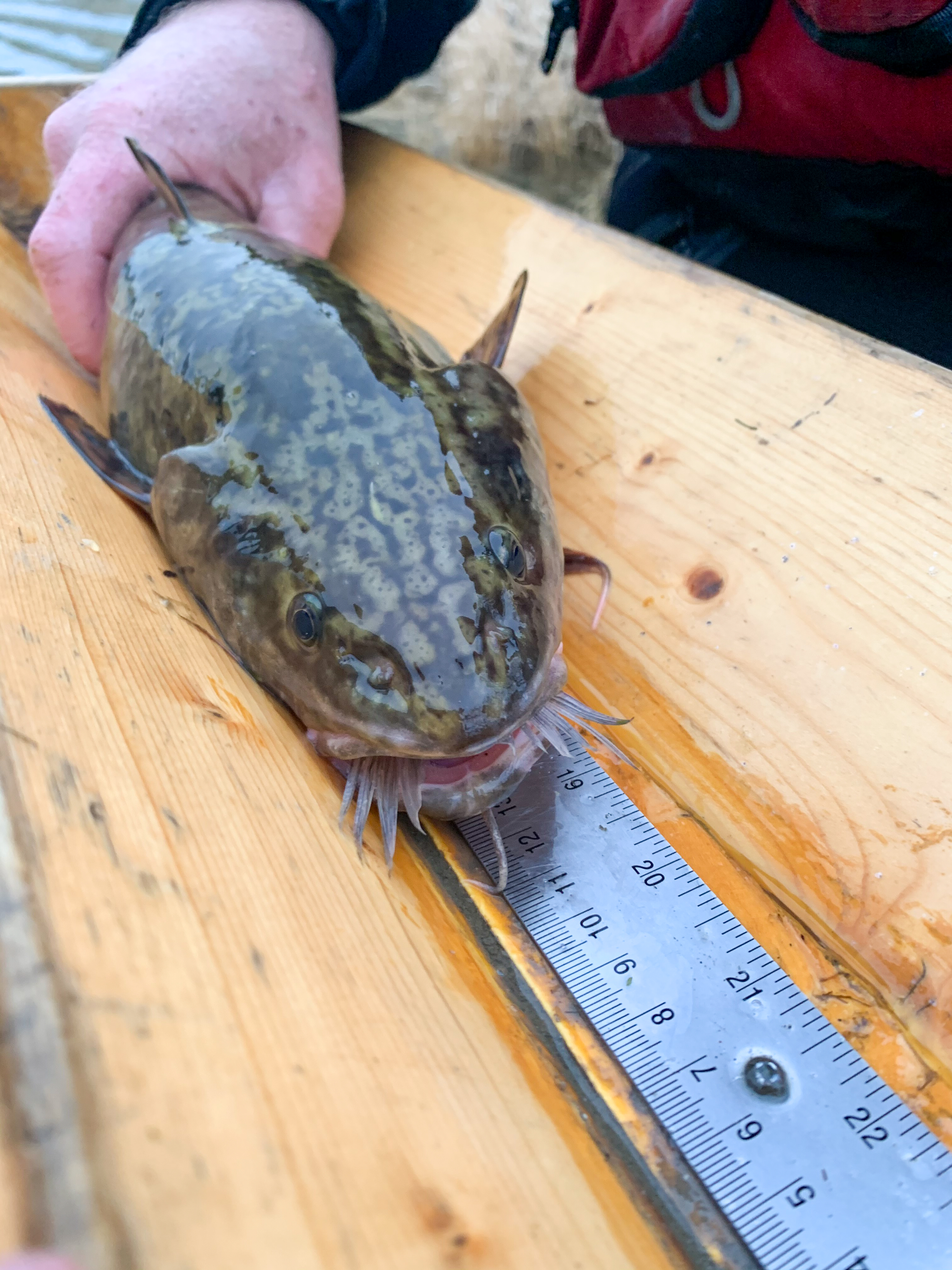Burbot are more accessible to anglers starting in mid-February and through late winter compared to any other time of year. During this time, burbot rapidly begin transitioning to spawning mode and start moving to shallower water in the river and its tributaries.
For much of the year, most burbot in the Kootenai River system reside in the deep, slow flowing pools or in the deep, cold waters of Kootenay Lake in British Columbia.

Burbot migration and spawning must be highly synchronized in order to successfully reproduce. Unlike salmon and trout, burbot don’t build nests. They group together in “spawning balls” and eggs are fertilized in the water column before drifting down to the river bottom.
Spawning takes place not only in the main channel of the river but also in tributaries like Deep, Smith and Boundary creeks, along with many others. Regional Fisheries Biologist T.J. Ross recommends anglers try fishing confluence zones where tributaries and the mainstem Kootenai River meet.
“These areas have the types of substrates burbot prefer to spawn over and are potentially burbot hotspots," Ross said.
Find a bait that works
Burbot are predatory fish, often eating things like minnows, crayfish or even each other. Therefore fresh, meaty bait is commonly used to attract burbot.
“We see a lot of folks using cut bait, worms or shrimp, with many folks reporting that native peamouth chub is the best bait around,” Ross reported.
The fish use their one long chin “whisker”, or barbel to probe along the river bottom so fishing bait from the bottom is usually the best place to start.

Where should you fish?
As if finding the fish from the shore or a boat wasn’t challenging enough, burbot are most active at night, adding yet another layer of complexity to burbot fishing on the Kootenai.
Anglers have reported success with fishing deep holes (40 feet or deeper) in the river during the daylight hours and then fishing shallower flats (5-15 feet) at dusk and during the night. Burbot tend to lay inactive in deeper holes during the day, and then they move onto the shallow flats in the evenings to feed.
“If I was to go and fish anywhere right now, I would find a comfortable spot at the mouth of a tributary, build a nice fire, cast a few lines out with cut bait and worms, and enjoy an evening under the North Idaho sky while waiting for my rod tip to start bobbing from a burbot bite," Ross said.
In 2004, only an estimated 50 fish remained in the entire Kootenai River. It is now estimated that 40,000-50,000 fish occupy the system. The Kootenai River is the only waterbody in Idaho where burbot are native and in 2019 the Idaho Fish and Game Commission reopened the fishery.
With the help of state, tribal, international, and federal partners and a state-of-the-art hatchery run by the Kootenai Tribe of Idaho, the return of the burbot fishery signaled a major conservation milestone. There is a growing number of anglers hitting the Kootenai and taking advantage of this unique and rewarding fishery.

